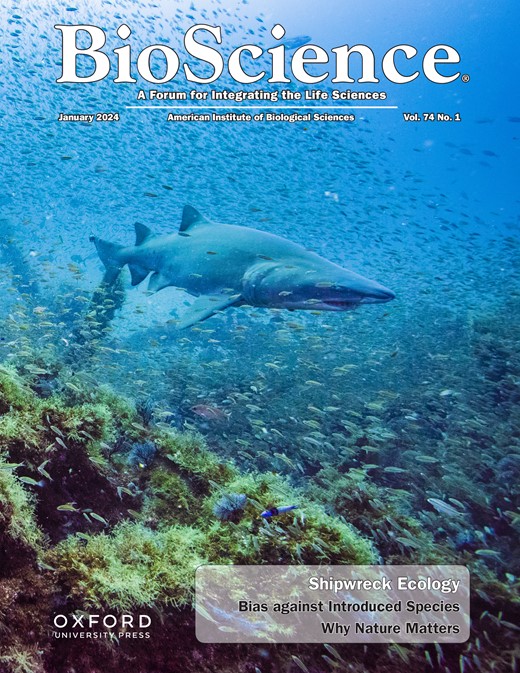All tidal wetlands are blue carbon ecosystems
IF 7.6
1区 生物学
Q1 BIOLOGY
引用次数: 0
Abstract
Managing coastal wetlands is one of the most promising activities to reduce atmospheric greenhouse gases, and it also contributes to meeting the United Nations Sustainable Development Goals. One of the options is through blue carbon projects, in which mangroves, saltmarshes, and seagrass are managed to increase carbon sequestration and reduce greenhouse gas emissions. However, other tidal wetlands align with the characteristics of blue carbon. These wetlands are called tidal freshwater wetlands in the United States, supratidal wetlands in Australia, transitional forests in Southeast Asia, and estuarine forests in South Africa. They have similar or larger potential for atmospheric carbon sequestration and emission reductions than the currently considered blue carbon ecosystems and have been highly exploited. In the present article, we suggest that all wetlands directly or indirectly influenced by tides should be considered blue carbon. Their protection and restoration through carbon offsets could reduce emissions while providing multiple cobenefits, including biodiversity.所有潮汐湿地都是蓝碳生态系统
管理沿海湿地是减少大气温室气体排放最有前景的活动之一,也有助于实现联合国可持续发展目标。方案之一是开展蓝碳项目,对红树林、盐沼和海草进行管理,以增加碳固存,减少温室气体排放。不过,其他潮汐湿地也符合蓝碳的特征。这些湿地在美国被称为潮汐淡水湿地,在澳大利亚被称为潮上带湿地,在东南亚被称为过渡森林,在南非被称为河口森林。与目前认为的蓝碳生态系统相比,它们具有类似或更大的大气固碳和减排潜力,并已被大量开发利用。在本文中,我们建议将所有直接或间接受潮汐影响的湿地视为蓝碳。通过碳抵消对其进行保护和恢复,可减少排放,同时提供多种共同效益,包括生物多样性。
本文章由计算机程序翻译,如有差异,请以英文原文为准。
求助全文
约1分钟内获得全文
求助全文
来源期刊

BioScience
生物-生物学
CiteScore
14.10
自引率
2.00%
发文量
109
审稿时长
3 months
期刊介绍:
BioScience is a monthly journal that has been in publication since 1964. It provides readers with authoritative and current overviews of biological research. The journal is peer-reviewed and heavily cited, making it a reliable source for researchers, educators, and students. In addition to research articles, BioScience also covers topics such as biology education, public policy, history, and the fundamental principles of the biological sciences. This makes the content accessible to a wide range of readers. The journal includes professionally written feature articles that explore the latest advancements in biology. It also features discussions on professional issues, book reviews, news about the American Institute of Biological Sciences (AIBS), and columns on policy (Washington Watch) and education (Eye on Education).
 求助内容:
求助内容: 应助结果提醒方式:
应助结果提醒方式:


